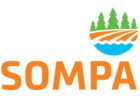A recent study by the Natural Resources Institute Finland (Luke), the Russian Academy of Sciences and the University of Eastern Finland analysed how different forest management practices affect the timber production, ecosystem net primary production and emission of greenhouse gases (GHG) in nutrient-rich peatlands drained for forestry in southern Finland. The examined sites acted as a carbon sink with low and middle harvest intensity, while these sites turned into a carbon source with high harvesting intensities.
We tested the effects of harvesting intensity, harvest interval and water table level management on ecosystem GHG balance in nutrient-rich Norway spruce stands on drained peatland sites. According to our simulation results, the emissions of CO2 and CH4 were dependent on water table level, temperature and moisture of peat, and amount of litter input.
Our results showed that the drained nutrient-rich peatland forest acted as a carbon sink with low and middle harvest intensity, while it turned into a carbon source with high harvesting intensities. This was mostly because intensive harvesting raised the water table level, thus decreasing tree production and increasing soil methane emission. Carbon dioxide emissions from peat and litter, in turn, correlated negatively with the intensity of harvesting. Drainage had a clear effect on productivity and emissions, but not on ecosystem carbon balance. At post-harvest basal area of 8 m2 ha−1 and higher, ditch network maintenance had almost no effect on net primary production.
We also found that there is a significant trade-off between maintaining carbon in drained peatland forests and providing harvest revenues. Peatlands distinctively differ from mineral soils with regard to carbon dynamics. In particular, the soil carbon stock in peatlands is typically much higher and more vulnerable, where also the water level plays a much more crucial role and directly controls both the emissions of the two major GHGs, CO2 and CH4, and tree stand growth.
In peatlands, the choice of the silvicultural system between rotation forestry and continuous cover forestry may have a decisive role for carbon dynamics since it directly interacts with the soil water table.
The simulations provide novel results and fill a gap of knowledge in ecosystem responses to alternative management regimes in continuous-cover forestry on drained peatlands.
The study was conducted as part of the SOMPA project (www.luke.fi/sompa) funded by the Strategic Research Council and the Academy of Finland provided also financial support for the visits of Russian scientist in Finland.
The study has been published in Forest Ecology and Management
